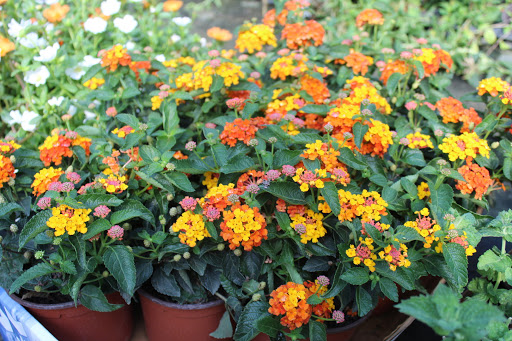- Gardening: Lantana
Lantanas are a fabulous choice to attract butterflies and hummingbirds/hummingmoths to the garden, with various butterfly varieties starting to appear at this time of year.
Lantana – common name Wild Sage – is a scrambling, thorny, evergreen shrub, that can grow over 2 metres wide, if clambering through other plants like honeysuckle for support, with a multitude of colours.
A native plant to tropical regions of the Americas and Africa, Lantana exists in areas worldwide – and in abundance in Spain.
Growing and care of the Lantana plant is easy, and can be grown in the garden, or in containers. Trailing varieties can also be grown in hanging baskets.
Lantana thrive in a sunny location, planted in well-drained soil. And, although tolerant of most soil conditions, they prefer a slightly acidic soil. Mulching increases acidity levels.
Lantana, newly planted, require frequent watering; however, once established, require little maintenance and are tolerant of dry conditions in Spain.
Encourage Lantana re-blooming, by dead-heading regularly. Cut-back overgrown plants, up to a third of their growth, in Spring.

Lantana leaves have been found to have antimicrobial, fungicidal and insecticidal properties. And is a plant in many Costa Blanca gardens used to alleviate mosquitoes!
Lantana has been used in traditional herbal medicines, for treating a variety of ailments, including leprosy, rabies, chicken pox, measles, asthma and ulcers.
Caution is required when growing Lantana, due to leaves and seeds being toxic. The unripe, green berries can cause vomiting, diarrhoea, dilated pupils and laboured respiration – if ingested – and the leaves may cause dermatitis.
GARDEN FELIX Los Montesinos.
We look forward to seeing all our loyal customers again, once the imposed movement put in place by the authorities, due to the coronavirus, is lifted. Keep safe. Felix, Garden Felix.





